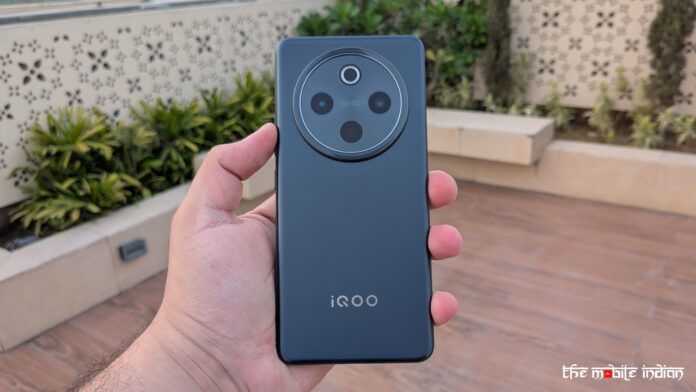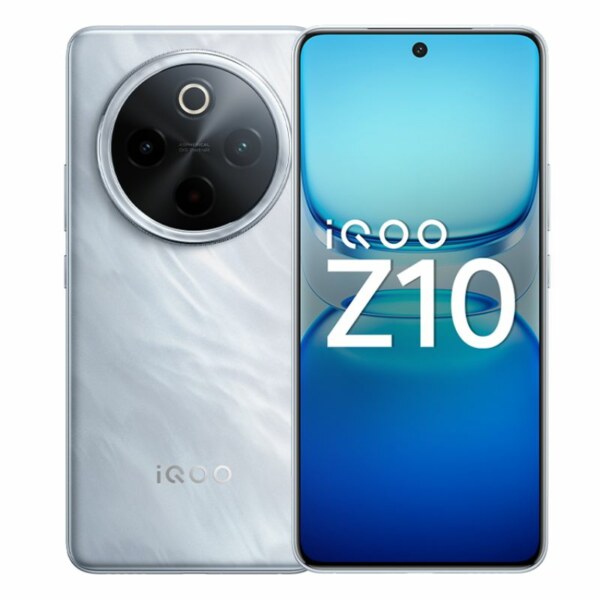iQOO started off the year well with the Neo 10R 5G, which matched our expectations in our review. Now, the company has gone one segment down for its new launch dubbed the iQOO Z10 series. Out of the two new devices, here’s our review of the iQOO Z10 5G after extensive use to help you find out whether it’s worth the starting price of Rs 21,999.
Design and Display

The design of the iQOO Z10 5G departs from the usual one iQOO has opted for in the past few months. The camera module now looks similar to what we have seen from other brands, where a single circular module houses all the sensors.

The device is entirely made of polycarbonate, but it doesn’t feel cheap in the hand. Even though it packs a huge battery, it doesn’t feel heavy in the hand, and the weight distribution has been handled well.

The buttons feel tactile, and the back panel has a matte and glittery finish for the black shade we got. The back panel and frame are curved, but the in-hand grip is not bad at all.

The device has a single speaker at the bottom which is loud enough but lacks depth. Further, the Haptics are below average as the device uses the regular motor. In comparison, the haptics on the Nothing Phone (3a) are far better and stronger. The device is also IP65 rated for water and dust resistance.
Aside from that, the overall design of the device looks appealing.

The display on the front is a 6.77-inch quad-curved AMOLED Display with a 120 Hz refresh rate, a full-HD+ Resolution of 2392 x 1080 pixels, 387 ppi, up to 5000 nits local peak brightness, 1300 nits HBM value, and a P3 colour gamut. We appreciate iQOO for equipping the device with a quad-curved panel at this price point and it is quite a decent panel in daily use as well. The bezels aren’t even on all sides, but are still thin enough. Because it is a quad curved panel, it also looks aesthetically pleasing.
While the brightness in outdoor conditions could be better, it’s sharp and vivid and watching content on this display was a treat. The colours are handled well and are vibrant. The display is also responsive to the touch in games and with a 120 Hz refresh rate, smoothness isn’t an issue at all. However, apps like Netflix do not support HDR.
The in-display optical fingerprint sensor works as it should without any quirks. It’s quick as well as accurate in detecting the fingerprints.
Software and Performance
The iQOO Z10 5G is powered by the Snapdragon 7s Gen 3 Chipset paired with up to 12GB LPDDR4x RAM and up to 256GB of UFS 2.2 storage. The device’s RAM management is impressive, and so was its overall performance. While I could easily spot some delays while opening apps, the overall experience remained fluid without any major lags.

Switching through apps was a breeze, and the handset’s gaming performance with casual games like RL sideswipe was impressive. However, due to hardware limitations, the device can’t handle more demanding titles like Call of Duty at the maximum possible graphics, but that’s acceptable at this price point.

Aside from that, there are some design elements of FunTouch OS 15 that I am not a fan of, such as the compact notification grouping from the same App in the notification panel, the design of the quick settings panel, and some animation inconsistencies. There’s also some bloatware, including the V-Appstore, iQOO’s own browser, etc., which can’t even be disabled. Some pre-installed games and apps like Facebook can be uninstalled, though.
The iQOO Z10 5G offers a good number of features, including app lock, animation customisation, app cloner, ultra game mode, system theming, various gestures, and a good number of lock screen clock styles and AOD clock styles.

Speaking of the Always-on display, it turned out to be a disappointment as you can’t keep it turned ON at all times, even though the device employs an AMOLED panel. You can only turn it on using one of two ways: either pick your phone or tap the display to see it, or move your phone slightly to make it appear.
FunTouch OS is definitely not on my list of favourite Android OS skins, and omissions like these further sour the experience. We hope iQOO is planning to revamp the software experience of its devices soon, as brands like Samsung, Nothing, OnePlus, and Oppo are far ahead in the software space.
The handset’s connectivity performance remained optimal. The device was running the March 2025 security patch out of the box, which is acceptable.
Battery and Charging
The iQOO Z10 5G packs a rather large Li-Ion battery cell with a 7300mAh capacity and 90W Fast charging support. As large as it seems on paper, the performance is even more insane in real-world use. The device challenges you to kill it in a day, and you’d mostly lose that challenge because the backup the device gives is par excellence.

To push it to its limits, I did 120fps gaming on the device with the highest touch sampling rate, yet I still couldn’t kill it in a day. The device consistently gave me unbelievable numbers. It lasted me 1 day and 15 hours with slightly over 8 hours of screen-on time, out of which about 6 hours accounts for gaming which is beyond outstanding.
With moderate use, such as tasks like scrolling through social media, chatting on WhatsApp, calling, listening to music, streaming videos, browsing the web, etc., you can even get up to 3 days of backup. With such use, I could easily surpass the 10-hour mark in terms of screen-on time and around 2 days of backup.
Words aren’t enough to describe how amazing this battery is and how well the system has been optimised to make use of it. iQOO has also provided some features to extend the longevity of the battery, such as charging limit, ability to see battery health, etc.
There has been no flagship or a mid-ranger smartphone that has been able to provide such results in battery usage in my experience of reviewing smartphones for the past few years and it has impressed me a lot.
Cameras

The iQOO Z10 5G houses a dual-rear camera setup, including a 50-megapixel f/1.8 primary sensor with OIS and a 2-megapixel f/2.4 depth sensor. There’s a 32-megapixel f/2.0 sensor on the front.


The photos from the primary sensor are surprisingly good, both in terms of colours and detailing. Give the sensor enough light and you’d get a satisfactory shot. The colours reside on the natural end of the spectrum, which those who want vivid shots may not prefer. Even if you zoom into the shot, it doesn’t lose out on details, which is good. The dynamic range in the photo is also quite impressive and even the shutter lag is well-contained.

Further, portrait shots also look good, but they do miss out on some details if you go pixel-peeping. However, the bokeh effect looks natural, and EDGE detection stays accurate and sharp.

Photos under artificial lighting are not compromised on detailing or colours. The shot maintains its sharpness and looks great.

For shots in low light, the camera struggles to focus on the subject, and there’s hardly any detailing, but once you turn on night mode, things do get better to some extent.


The device can zoom in at up to 10x, but at that magnification, the shots are barely usable. At 2x, the colours look fine, but the detailing does take a hit. However, the shots are still acceptable.


Speaking of selfies, the front-facing camera shoots satisfactory photos outdoors. The skin tones are handled well while the details in the shot are also on point. However, once the background gets too bright and HDR kicks in, the details of the subject start to fade away and the photos begin to look soft.



